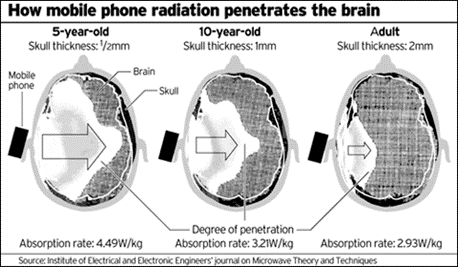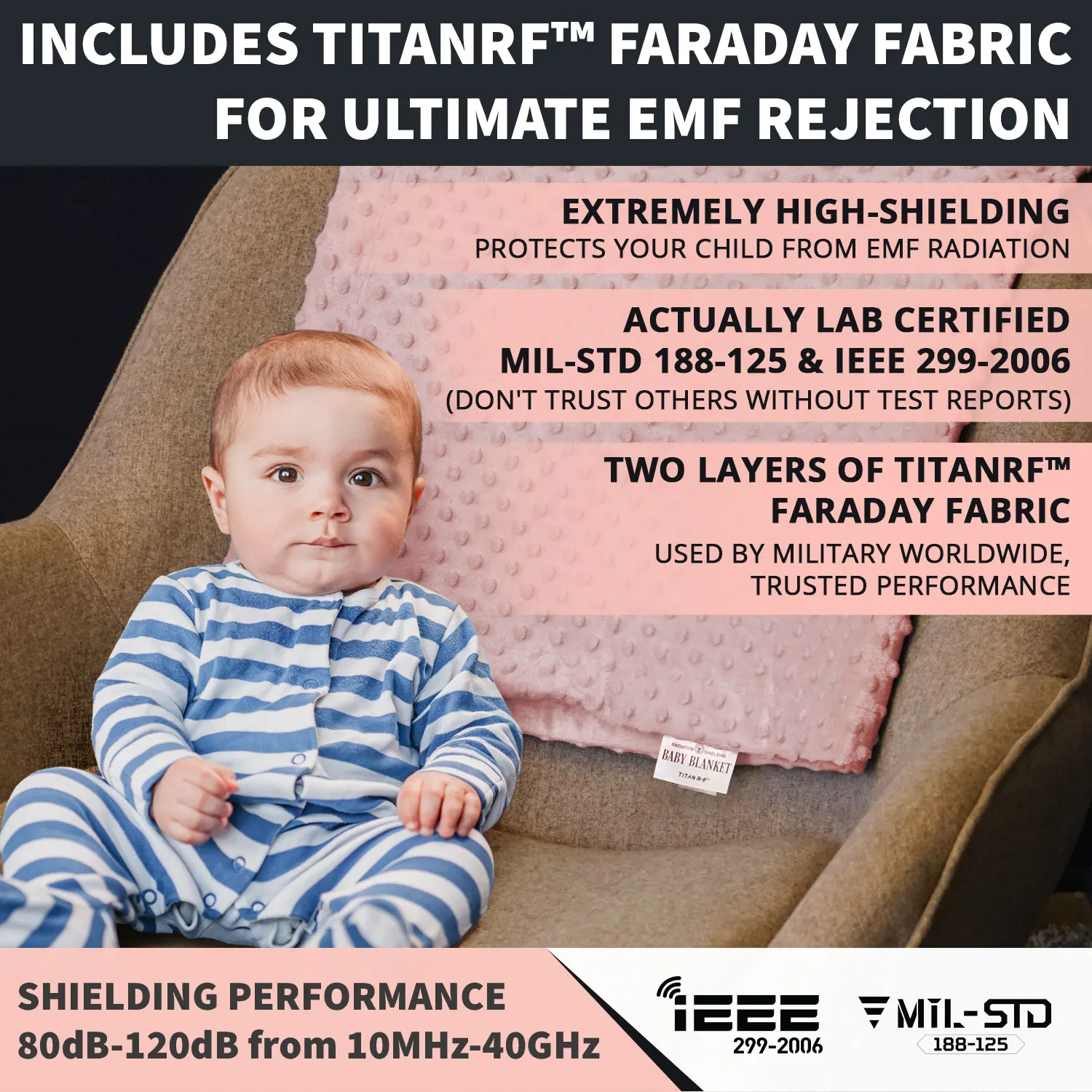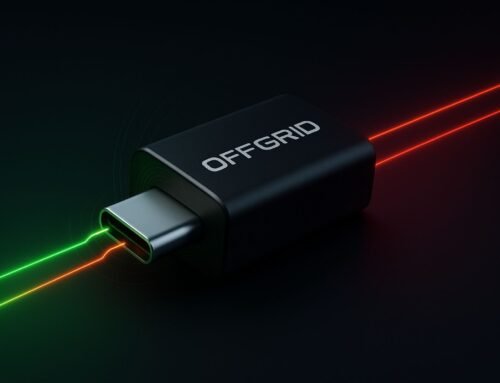The Risks of Wireless Baby Monitors and Safer Alternatives
Wireless baby monitors have become an indispensable tool for many parents, offering the convenience of keeping a close eye on their infants remotely. These devices, which often feature video, audio, and even mobile app integration, provide a sense of security and ease.
However, there are growing concerns about the potential risks associated with these monitors, particularly concerning electromagnetic field (EMF) exposure.
This article explores the potential health and security risks of wireless baby monitors, provides an overview of safer alternatives like low EMF models and wired monitors, and offers practical tips for reducing EMF exposure.

Fig. 1 – Our children are precious; we want to ensure we can be there quickly if something goes wrong. But are Baby Monitors causing more issues than they are solving?
The Prevalence and Popularity of Wireless Baby Monitors
The market for baby monitors has seen significant growth, with wireless models leading the way due to their advanced features and ease of use. According to recent market data, the global baby monitor market is set to continue expanding, driven by technological advancements and increasing parental concern for child safety.
Key features such as HD video, two-way communication, and smart device integration make wireless monitors highly appealing. They allow parents to monitor their children from any location within or outside the home, offering a level of convenience and reassurance previously unavailable.
But is all of this advancement placing babies at risk? As these devices become more complex, with higher resolution cameras and faster WiFi speeds (requiring more powerful chipsets), are we placing our children at real risk of radiation-related damage?
Let’s explore the technology and the relative risks associated with Baby Monitors.
Understanding EMF (Electromagnetic Fields)
First off, let’s examine what Electromagnetic Fields are. Electromagnetic fields (EMFs) are areas of energy that surround electrical devices and wiring. These fields can be classified into low-frequency EMFs, which are typically associated with power lines and household appliances, and radiofrequency (RF) EMFs, which are emitted by wireless devices, including baby monitors, smartphones, and Wi-Fi routers.
RF EMFs are a form of non-ionizing radiation used for transmitting data wirelessly. While generally considered safe at low levels, there is ongoing research into the potential long-term health effects of prolonged exposure, especially in sensitive populations like infants.

Fig. 2 – Many WiFi Baby Monitors operate in the 2.4GHz range, which is very close to microwave frequencies.
Relevant Safe Levels of EMF Exposure
The safety of EMF exposure is often measured in terms of Specific Absorption Rate (SAR), which quantifies the rate at which the body absorbs RF energy. The International Commission on Non-Ionizing Radiation Protection (ICNIRP) and other health agencies have established guidelines for safe levels of RF exposure to protect human health.
- General Public Exposure Limits: For the general public, the ICNIRP guideline specifies a SAR limit of 2 W/kg averaged over 10 grams of tissue for frequencies up to 10 GHz. This limit is designed to prevent acute thermal effects and assumes exposure by adults.
SAR Levels for High Emitting Baby Monitors
Many wireless baby monitors emit RF radiation at levels that can be concerning when used in close proximity to infants. For example:
- Wi-Fi-Based Baby Monitors: These rely on constant Wi-Fi transmission, resulting in higher RF radiation levels. These devices can have SAR levels close to the ICNIRP limit of 2 W/kg for adults, but continuous exposure and the proximity to the baby’s head are highly worrisome.
- FHSS and DECT Monitors: Those that use FHSS or DECT technology, which also emit RF radiation. Although they may emit lower levels than Wi-Fi-based monitors, they can still pose a risk due to continuous usage. And a worrisome feature of these types of Baby Monitors is that they used pulsed signal technology, which has been shown to cause Genotoxic effects.
Specific Absorption Rate (SAR) and Infants
The SAR limit set by ICNIRP is based on adult exposure, which does not adequately account for the vulnerability of infants. Several factors contribute to the increased susceptibility of infants to RF radiation:
- Thinner Skulls: Infants have thinner skulls compared to adults, which means that more radiation can penetrate deeper into their brains.
- Higher Absorption: Due to their smaller size and higher water content, infants can absorb RF radiation more quickly and at higher levels than adults.
Studies indicate that the SAR for infants can be significantly higher than for adults, even when exposed to the same levels of RF radiation. For instance, research has shown that the SAR in children’s heads can be twice that of adults, and in infants, this can be even higher. This suggests that even devices that comply with adult SAR limits might expose infants to unsafe levels of RF radiation.

Fig. 3 – Babies have an even thinner skull; modern research suggests your baby could be receiving up to 50 times a safe level of radiation (as per BioInitiative Report).
Many Studies Suggest That The 2 W/kg Standard May Be Too High
There are studies and expert opinions suggesting that the current SAR limit of 2 W/kg may be too high, particularly for vulnerable populations like infants and children:
1. The BioInitiative Report
Overview: The BioInitiative Report reviews over 1,800 studies on the health effects of electromagnetic fields (EMF), with particular attention to vulnerable groups like children and pregnant women.
Key Findings:
- Current safety standards for EMF exposure are not adequate to protect public health.
- Children are more vulnerable to EMF exposure due to their developing brains and thinner skulls.
- The report suggests a precautionary exposure limit of 0.04 W/kg for children, far lower than the standard 2 W/kg for adults, to reduce long-term health risks.
Implication for Infants: Babies and infants, being even more vulnerable than children, are at higher risk for potential developmental and health problems from long-term EMF exposure. Link to the study – BioInitiative Report
2. National Toxicology Program (NTP) Study
Overview: This U.S. government study explored the health effects of long-term exposure to radiofrequency (RF) radiation, the type emitted by wireless devices, on lab animals.
Key Findings:
- The study found “clear evidence” linking high levels of RF radiation to cancerous heart tumours in male rats.
- There was also some evidence of increased risk for brain and adrenal gland tumours.
- These findings raise concerns about the adequacy of current RF exposure limits, as they may not protect against long-term health risks.
Implication for Infants: Though conducted on animals, the results highlight potential long-term dangers of RF radiation exposure, suggesting that current safety limits may not fully protect infants, whose developing tissues may be even more susceptible to harm. Link to the study- NTP Study Summary
3. Environmental Health Trust
Overview: This U.S. government study explored the health effects of long-term exposure to radiofrequency (RF) radiation, the type emitted by wireless devices, on lab animals.
Key Findings:
- The study found “clear evidence” linking high levels of RF radiation to cancerous heart tumours in male rats.
- There was also some evidence of increased risk for brain and adrenal gland tumours.
- These findings raise concerns about the adequacy of current RF exposure limits, as they may not protect against long-term health risks.
Implication for Infants: Though conducted on animals, the results highlight potential long-term dangers of RF radiation exposure, suggesting that current safety limits may not fully protect infants, whose developing tissues may be even more susceptible to harm.
4. European Commission’s Scientific Committee on Emerging and Newly Identified Health Risks (SCENIHR)
Overview: This 2015 report by the SCENIHR examined the scientific evidence on the health effects of EMF exposure.
Key Findings:
- The report acknowledged scientific uncertainties about the long-term health effects of EMF exposure.
- It did not call for immediate changes to the current exposure limits but recommended that precautionary measures be taken, especially for children, until more conclusive evidence is available.
Implication for Infants: Given the uncertainties highlighted in the report, a precautionary approach is recommended when it comes to exposing infants to EMF. This suggests that minimizing exposure as much as possible is wise, even if the current standards do not mandate changes. Link to the study – SCENIHR Opinion on EMF
5. Gandhi et al. Study
Overview: This study analysed how RF radiation is absorbed differently in children compared to adults.
Key Findings:
- Children’s heads absorb RF radiation at significantly higher levels than adults—up to twice as much.
- This increased absorption is due to thinner skulls and smaller head size, allowing more radiation to penetrate the brain.
- The study questions whether the 2 W/kg standard, designed for adults, is appropriate for protecting children and infants.
Implication for Infants: Since babies have even thinner skulls and smaller heads than children, they are likely to absorb even more RF radiation. This suggests that the current 2 W/kg SAR limit does not provide adequate protection for infants, raising concerns about potential developmental and health risks. Link to study – Gandhi et al. Study
What are these studies telling us?
These studies collectively raise significant concerns about the adequacy of current EMF exposure limits, especially for babies and infants. The evidence suggests that children, and particularly infants, absorb more radiation than adults due to their developing bodies, thinner skulls, and smaller size. This makes them more vulnerable to the potential long-term health risks of EMF, such as cancer, brain development issues, and other serious conditions.
We sincerely hope that stricter exposure limits and precautionary measures are adopted to protect infants from wireless devices like baby monitors. Until then, there are some steps that you can take to limit the amount of EMF radiation that your child is exposed to.
Safer Alternatives to Wireless Baby Monitors
For parents concerned about EMF exposure, wired baby monitors are a reliable and safer alternative, but almost impossible to find these days. Additionally, they require a more complicated installation, which would make them cost prohibitive.

Fig. 4 Although Baby Monitors provide parents with Peace-of-Mind around issues such as SIDS, they may promote poor health outcomes in babies.
Why EMF Shielding is Important for Babies
As the above scientific studies show, there are concerns about prolonged EMF exposure, particularly in infants and young children. Their small size, rapidly developing brains, and higher absorption rates of EMF make them more susceptible to its potential risks. Whether it’s the EMF emitted from the baby monitor in their crib or the wireless devices around the house, these invisible waves can interfere with their natural development.
The Mission Darkness Faraday Baby Blanket offers an extra layer of protection, ensuring your baby’s delicate system is shielded from EMF radiation. Designed with military-grade Faraday fabric, this blanket effectively blocks EMF, RF (radio frequency), and other wireless signals, creating a safe, secure environment for your little one.

Versatile Use for Maximum Protection
The beauty of the Mission Darkness Baby Blanket lies in its versatility. You can use it in various settings to keep your baby protected:
At Home: Place the blanket in your baby’s crib, especially if you are using a baby monitor or other wireless devices nearby. This provides a shield from any EMF that could otherwise reach your baby while they sleep.
On the Go: Whether you’re out at the park, in the car, or visiting family, you can bring the blanket along to ensure your baby is protected from EMF wherever you are.
During Sleep: If your home has wireless routers or devices that emit EMF in the vicinity of your baby’s crib, the blanket acts as a barrier, ensuring that the radiation is blocked effectively.

A Simple and Safe Solution
Unlike other complex solutions, the Mission Darkness Faraday Baby Blanket is easy to use. Just drape it over your baby, their crib, or their stroller, and you’ve instantly reduced their exposure to potentially harmful radiation. It’s made from soft, hypoallergenic materials that are safe and gentle for babies, while the embedded Faraday fabric provides unmatched protection.

These days it seems like wireless devices are everywhere, the Mission Darkness Baby Blanket offers peace of mind to parents who want to ensure their baby is as safe and healthy as possible. By incorporating this protective tool into your baby’s daily routine, you can minimize the risks of EMF exposure and provide a safer environment for your child’s growth and development.
Other Practical Tips for Reducing EMF Exposure
As a parent, you can take several practical steps to minimize your child’s exposure to EMFs from baby monitors (if you feel you can’t do without one) and other devices:
- Monitor Placement: Keep the baby monitor at a safe distance from the crib, ideally several metres away, to reduce direct exposure, as the radio waves will diminish over distance.
- Use Low EMF Devices: If you absolutely have to have a baby monitor, choose a brand with low EMF emissions, or a mode that only switches the WiFi on when a noise is heard.
- Switch Off When Not in Use: Turn off baby monitors and other electronic devices when they are not needed.
- Shielding with Faraday Fabrics: Use Faraday fabrics to line the walls or curtains in the baby’s room, which can help block EMF radiation from external sources.
By being informed and proactive, parents can create a safer, healthier environment for your children while still benefiting from the convenience of modern baby monitoring technology.
Conclusion: Protecting Your Baby in a Wireless World
In today’s hyper-connected world, where wireless devices and EMF-emitting technologies are unavoidable, protecting our babies from potential risks is more important than ever. Baby monitors, though invaluable for peace of mind, are just one source of radiation in the home that parents must be aware of. As research continues to raise concerns about EMF exposure, especially for vulnerable populations like infants, it’s crucial to take precautions.
Opting for low-EMF alternatives and considering wired options is a smart step. However, incorporating additional safeguards, such as the Mission Darkness Faraday Baby Blanket, offers enhanced protection by blocking harmful EMF in various settings—whether at home, in the crib, or on the go. This military-grade solution gives parents peace of mind that their baby is shielded from invisible dangers, providing a safer space for healthy growth.
By being informed about the potential risks of EMF exposure and taking proactive steps to reduce it, parents can ensure that their child is protected in the wireless world. The balance between modern technology and safety lies in making mindful choices, and products like the Faraday Baby Blanket offer a simple, effective way to prioritize your child’s well-being.
Lastly – if you have any questions, please feel free to contact us, we’d like to help you protect yourself and your precious children.











